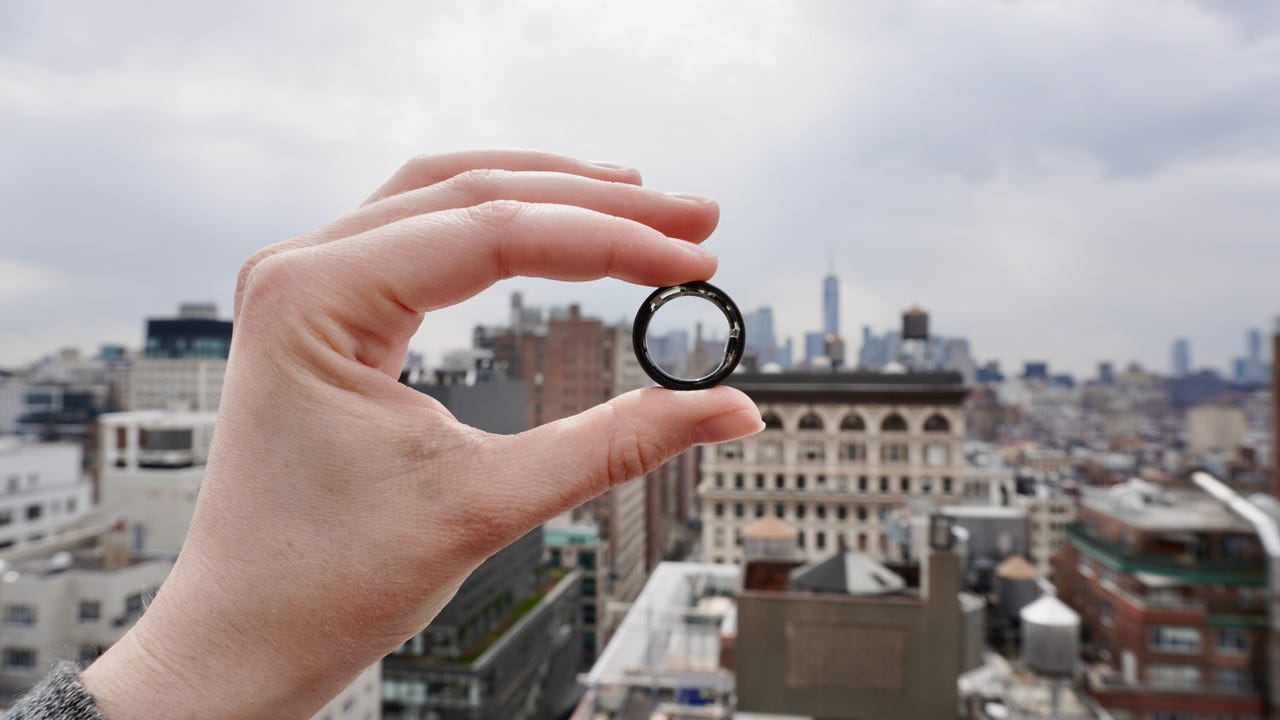'ZDNET Recommends': What exactly does it mean?
ZDNET's recommendations are based on many hours of testing, research, and comparison shopping. We gather data from the best available sources, including vendor and retailer listings as well as other relevant and independent reviews sites. And we pore over customer reviews to find out what matters to real people who already own and use the products and services we’re assessing.
When you click through from our site to a retailer and buy a product or service, we may earn affiliate commissions. This helps support our work, but does not affect what we cover or how, and it does not affect the price you pay. Neither ZDNET nor the author are compensated for these independent reviews. Indeed, we follow strict guidelines that ensure our editorial content is never influenced by advertisers.
ZDNET's editorial team writes on behalf of you, our reader. Our goal is to deliver the most accurate information and the most knowledgeable advice possible in order to help you make smarter buying decisions on tech gear and a wide array of products and services. Our editors thoroughly review and fact-check every article to ensure that our content meets the highest standards. If we have made an error or published misleading information, we will correct or clarify the article. If you see inaccuracies in our content, please report the mistake via this form.
The best smart ring for fitness junkies beats the Oura in 4 major ways

ZDNET's key takeaways
- The Ultrahuman Ring Air is the brand's first foray into the smart ring space, and it's available for $350, no subscription required.
- The ring is great for both hardcore fitness enthusiasts and recreational exercisers looking to use their health data to optimize their wellness routines.
- The app's user interface could be improved for easier access to daily logging functions.
The Ultrahuman Ring Air is one of the hottest new smart rings on the market, with features and data collection that goes a step beyond Oura for individuals looking to optimize their health. I tested one alongside the Oura Horizon ring this past month, wearing both around the clock, while also logging everything from my morning coffee to my late-night cocktails. Suffice it to say, the Ultrahuman ring will excite people who are dialed into their health and fitness.
Also: I tried the Samsung Galaxy Ring and it beats the Oura in 2 meaningful ways
While Oura seemingly appeals to just about anyone looking to invest in a smart ring, Ultrahuman's offering, while more niche, is arguably better. If the Oura Ring is the girl next door, the Ultrahuman Ring Air is the Silicon Valley-based, Bitcoin-mining neighbor who drinks Soylent. But while it will set hardcore fitness enthusiasts on the right path, this ring will also help anyone, even recreational exercisers, optimize their body to a tee.
View at AmazonUnlike the Oura Ring, which requires a $6 monthly subscription, the Ultrahuman Ring Air is subscription-free. The Ultrahuman comes in matte gray, matte black, silver, and gold. Out of all the smart rings I have tested, it is by far the thinnest, most discreet, and unassuming. Plus, the matte gray finish hasn't scratched or tarnished after a month of use, something I can't say about the other smart rings with shiny metal finishes.
Also: The best smart rings: Expert tested and reviewed
From the moment you wake up to the minute you fall asleep, Ultrahuman is sending you notifications on how to make the most of your available energy and body clock. With all these scientific insights into my body, I couldn't help but feel like I was hacking my health -- or playing God.
Within an hour of waking, Ultrahuman pings me about my "residual adenosine levels." My what? I had to look it up as well. Adenosine is the naturally occurring chemical that is associated with wakefulness. It tells me to delay consuming stimulants like caffeine until around two hours after I've been awake to flush adenosine out of my system and boost the impact of caffeine on my energy levels. It also reminds me to expose myself to bright light or exercise during this window if I want an earlier bedtime and wake-up time.
Throughout the day, I get pings like this. Ultrahuman tells me when my stimulant permissible window, the window where I can consume caffeine without it disrupting my sleep, is coming to a close. Not only that: Ultrahuman also tells me how much caffeine is in certain stimulants, how long they will stay in my system, and whether they exceed the caffeine intake of my window.
As the day goes on, Ultrahuman pings me to stretch my legs and when the ideal bedtime for a sufficient night of sleep would be. All of this is calculated based on my wake-up times, sleep, and recovery data.
Also: The Oura smart ring's brilliant new features outshine even its titanium finish
The Ultrahuman Ring Air measures heart rate, skin temperature, heart rate variability (HRV), and resting heart rate to glean data for sleep, recovery, and movement. It also measures VO2 Max, or how the body utilizes oxygen during workouts.
Ultrahuman presents all this data in an easy-to-understand format through an app, with scores (and explanations) for the big three: sleep, movement, and recovery. For example, when I got a 95 sleep score, it told me I fell asleep faster and stayed asleep for most of my rest duration. In tandem with my high sleep score, I got a 90 recovery score, and the blurb told me that my scores were in great shape, so I "might want to push a little more towards your cognitive and physical fitness goals." On a day when my sleep score was 49 and my recovery score 64, the app instructed me to go on a long walk and try a "non-sleep deep rest session" during the day.
Other health data, like HRV, VO2 Max, and resting heart rate, are tracked and the day-by-day data is aggregated and shown through graphs with daily, weekly, and monthly trends -- depicted with green and red indicators. All these data points come with explanations of what each indicator means about one's overall health, elucidating the complexity of them.
Another health feature the Ultrahuman ring offers is food logging, which leverages ChatGPT-powered AI food insights. I log the food I eat throughout the day, and its Food Optimization AI provides what it calls cyborg insights -- no, really -- about how to avoid glucose spikes when I consume certain foods. When I logged a bag of potato chips, it told me to pair the chips with cheese or other protein, like a hard-boiled egg, to slow down the absorption of glucose. It also told me to drink water before and after eating the chips and take a brisk walk after eating them to lower my glycemic response. While I rarely took this advice, this is a helpful feature for fitness and diet-obsessed people who want to optimize their diet and health data.
Also: Oura Ring users can now sync data with Strava -- here's how to turn it on
You can, of course, also log workouts, something I did often while training for my half marathon. The ring doesn't automatically detect that you're exercising, however, if it goes unlogged. I hope Ultrahuman improves this in future updates. I liked that I could see the map of where I ran, my average heart rate, my max heart rate, the calories I burned, and my average pace. Plus, it showed my workout zones too, something essential for tracking long runs.
The last feature that makes this ring ideal for exercise junkies is the Discover tab, which offers video classes for everything from Pilates and weight training to HIIT and yoga. There are also podcasts available for meditation and soundscapes for falling asleep.
You can wear the ring for about five days before the battery dies. I tested its battery life compared to Oura's by charging both to 100% on a Tuesday afternoon and waiting to see how long each would last through regular wear and activity. By Sunday morning, the Oura ring was at 7% and the Ultrahuman Ring Air was at 6%. I will note, however, that the Ultrahuman ring gets hot to the touch after charging.
Also: The best fitness rings
In the next update of the Ultrahuman Ring Air, I'd like to see the app's user interface improve. It could take some notes from Oura's app, which offers sleep, readiness, resilience, and activity on top of a home tab that aggregates this data on the bottom. Ultrahuman's bottom tabs include home, metabolism, zones, Discover, and a bare-bones profile section. I'd also like to see a more accessible logging feature wherein you don't have to scroll all the way down the app to use for food, exercise tracking, weight, and more.
ZDNET's buying advice
So who should buy this ring? I can imagine that anybody who's dialed into fitness and health metrics will get full use of the Ultrahuman Ring Air. And given how often my sleep duration and sleep and recovery scores from the Ultrahuman mimicked that of Oura's, I wouldn't be afraid to call this a subscription-free Oura dupe with rivaling data and battery life.
Ultimately, the Ultrahuman Ring Air impressed me. It's exciting to see such a new product step up to be a competitive fitness smart ring, being just niche enough to carve out an audience of devout fitness freaks but with data presentation, health metrics, and AI suggestions that could cater to the average Joe just as well.
